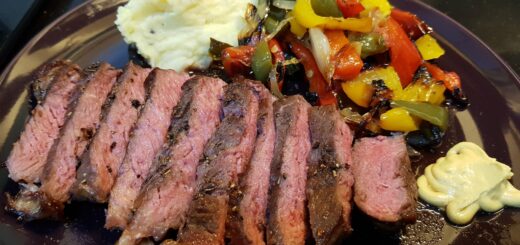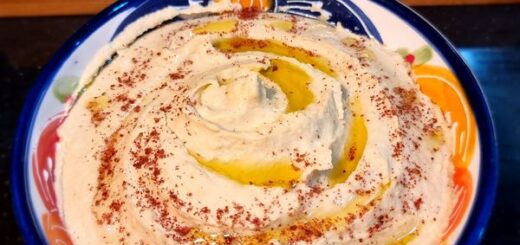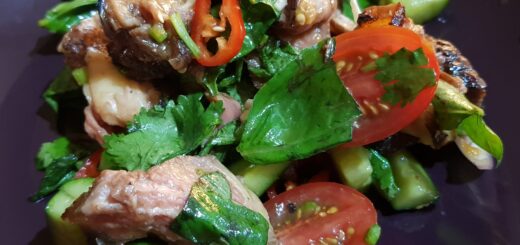Kangkung Belacan Goreng (Stir Fried Water Convolvulus with Shrimp Paste)
Kangkung (Water Convolvulus) is a leafy vegetable that is very common in the tropics. It grows easily and therefore is commonly available and cheap (https://en.wikipedia.org/wiki/Ipomoea_aquatica).
It was only after I started cooking Kangkung Belacan for myself that I have become a fan. My past encounters with the dish, I find it often overcooked, which results it being too mushy and soft. I prefer it when the stems are cooked but still slightly crunchy, and the leafs are not overly soft.
I stumbled into cooking it in the early days of lockdown, when sourcing groceries online was quite a challenge. I was trying out vegetable supplies from Agrofresh (https://agrofresh.oddle.me/en_MY/) and found they had a ready-to-cook Kangkung Belacan Meal Kit (https://tinyurl.com/y76mymzk), which had all the ingredients peeled and measured and ready to cook. I loved the result, but also realized it would not take much effort to prepare the ingredients from scratch and I could probably do it for cheaper and better. So a few weeks later, I tried making my own …
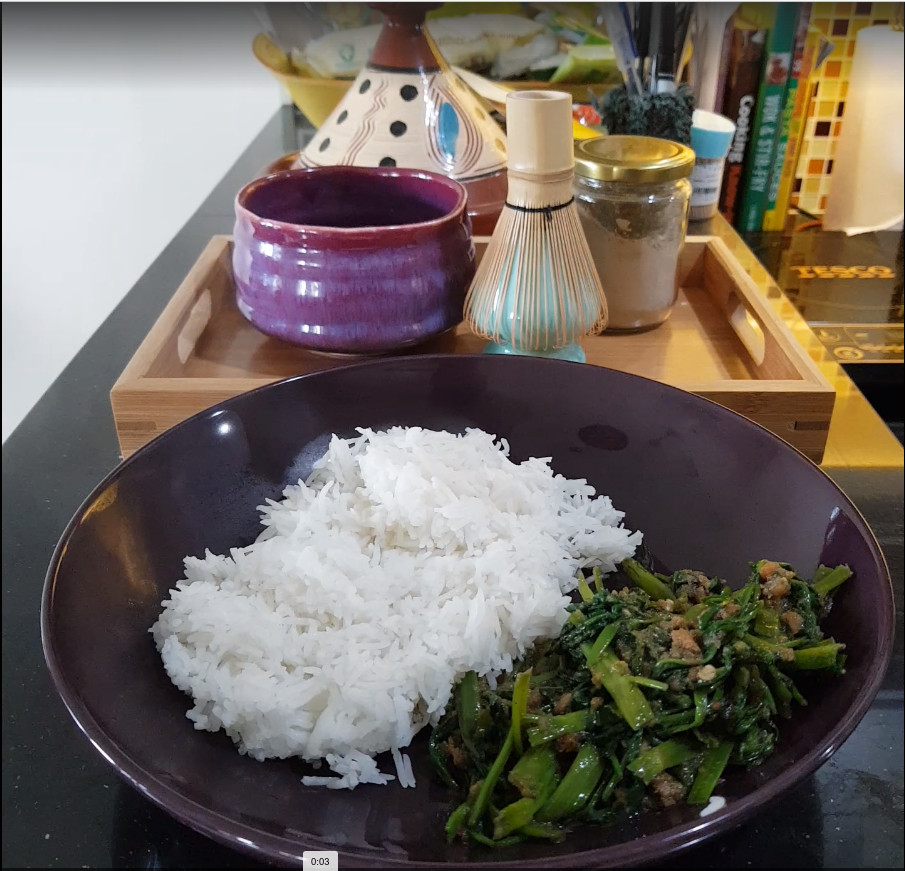
Kangkung Belacan is a simple dish that enjoyable with just plain steamed rice. Of course you can have it with other dishes, but a simple serving like this can be sufficiently satisfying.
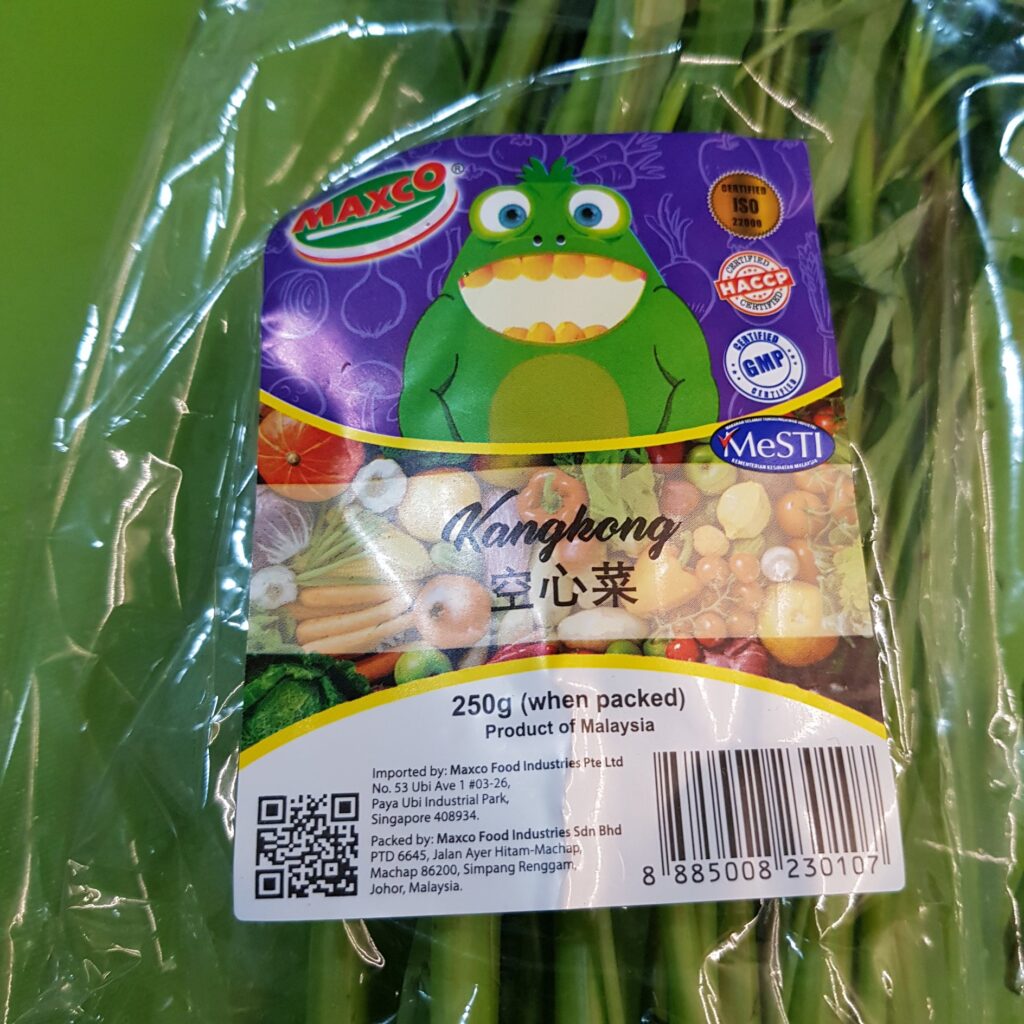
The main ingredient of course is Kangkung. I get this delivered with my MyGroser deliveries weekly, and make it a point to cook it on the same day (because once leafy vegetables go into my fridge I tend to forget about them). I found the kangkung from MyGroser to be relatively clean so it doesn’t take much effort to wash. https://mygroser.com/en/product/Kangkung-Water-Spinach–250g
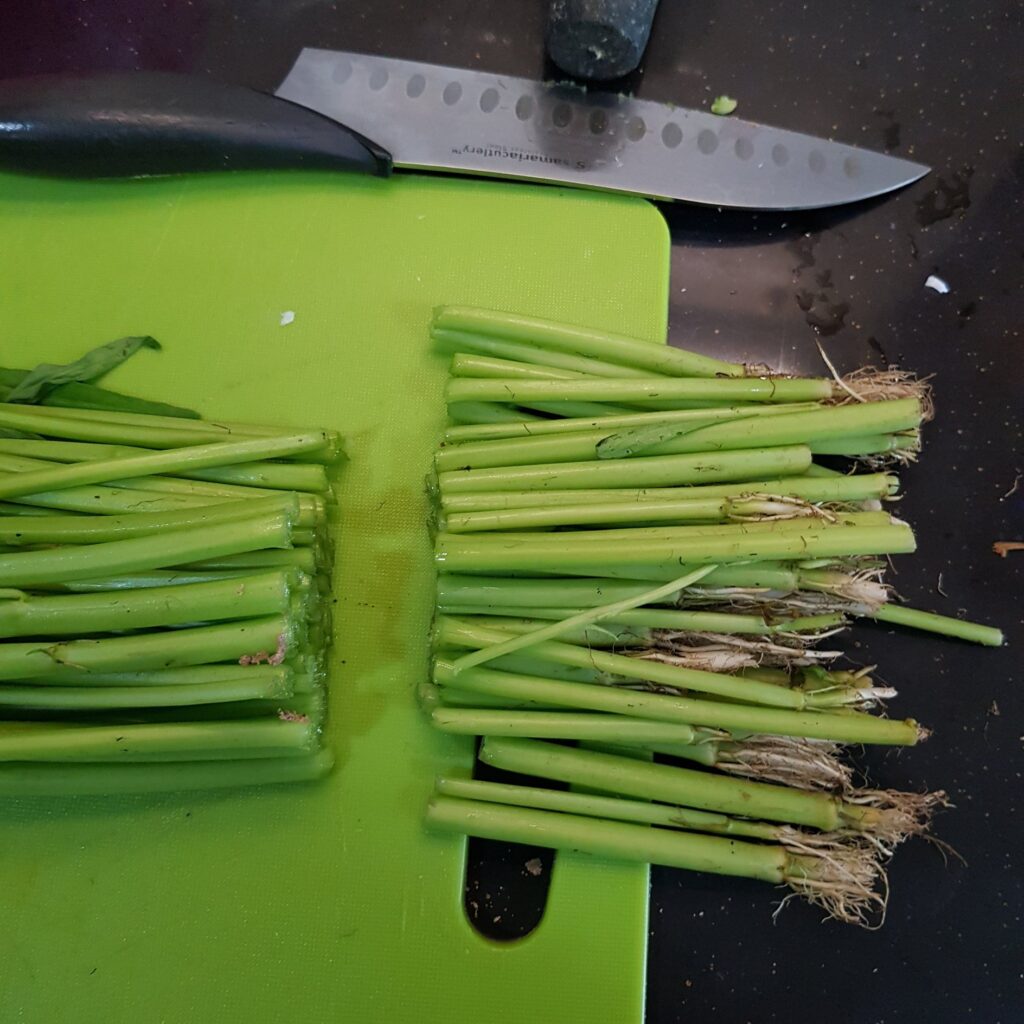
The ends with the roots are not used. The stems of the kangkung are rather long and you end up with a lot more stems than leafs, so I tend to cut a bit more of the root off.
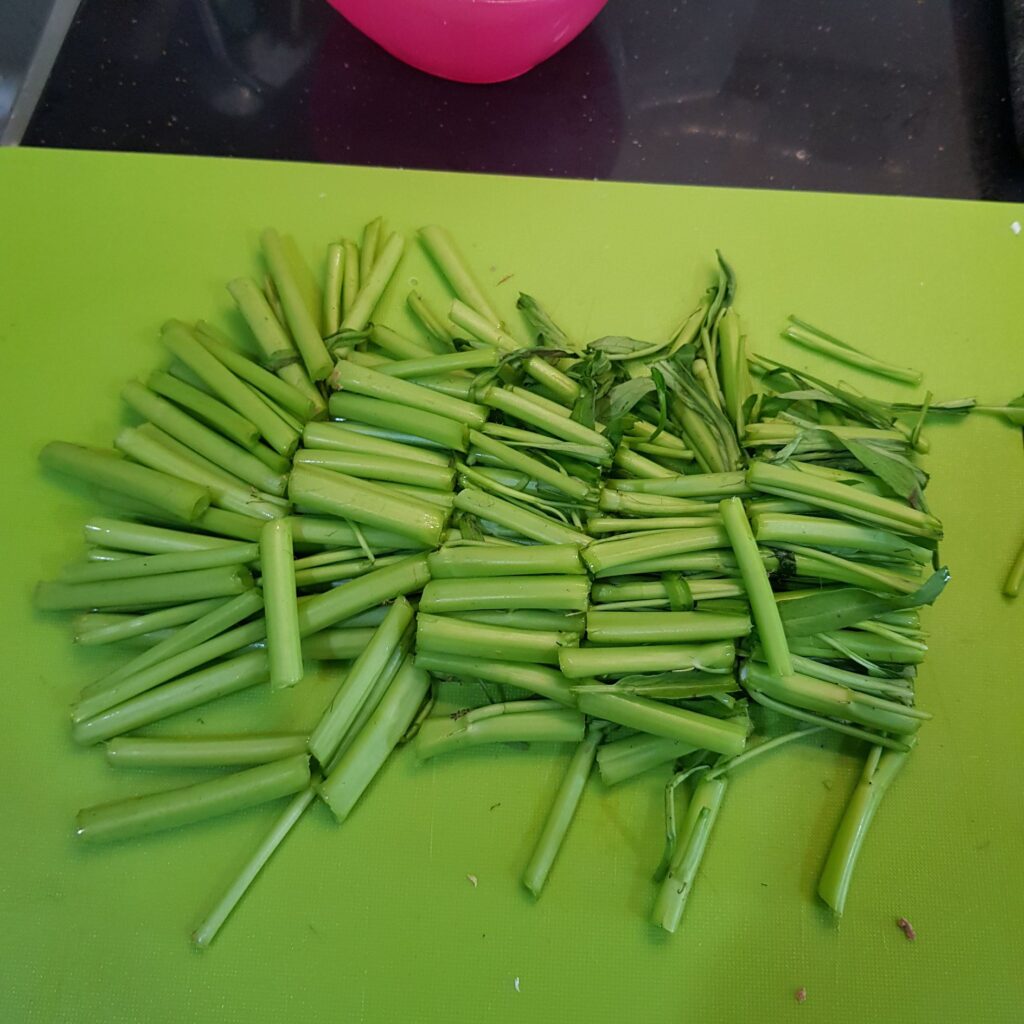
The stems are separated from the leafs, and both are chopped into small bite size pieces (about 4cm in length), and washed under running water.
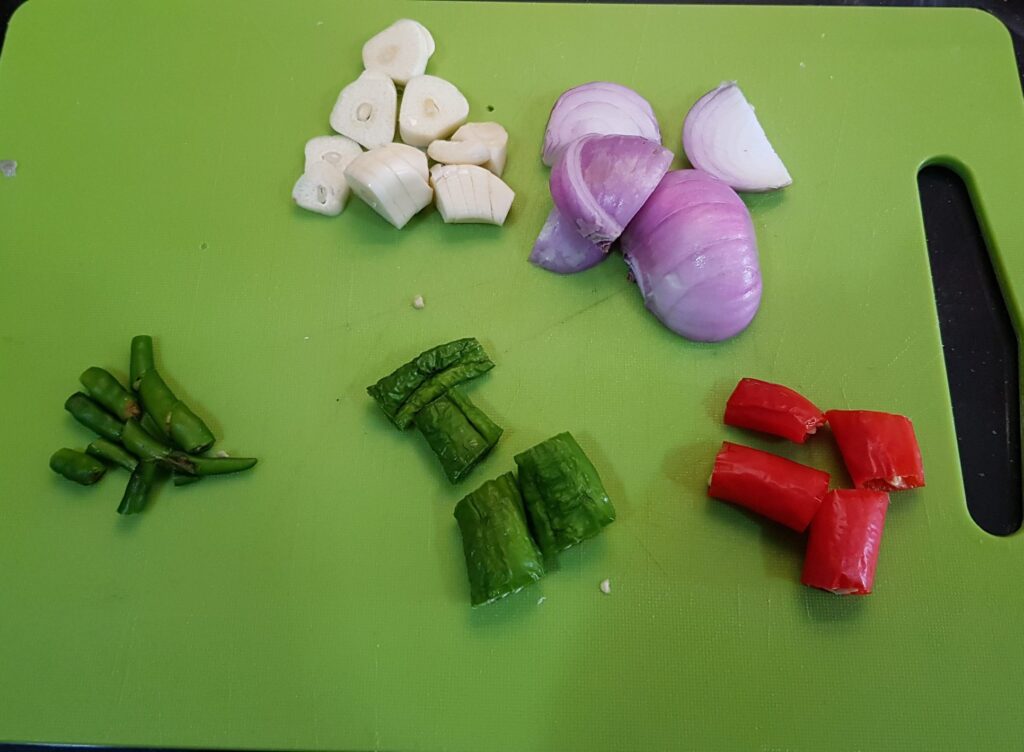
We also need:
- Garlic
- Shallots/Onions
- Red Chillies
As with most asian cooking, quantities are “agak-agak” … just go with what feels right and refine from there.
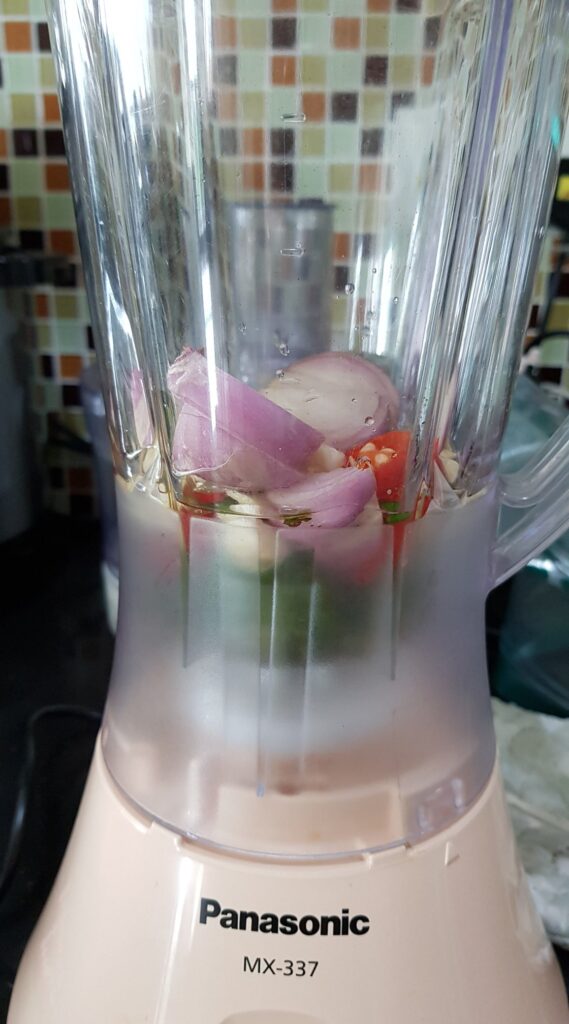
These ingredients are all blended together. You may need to add some water if your quantities are small, but try to minimise the water — you will need to steam it off later.
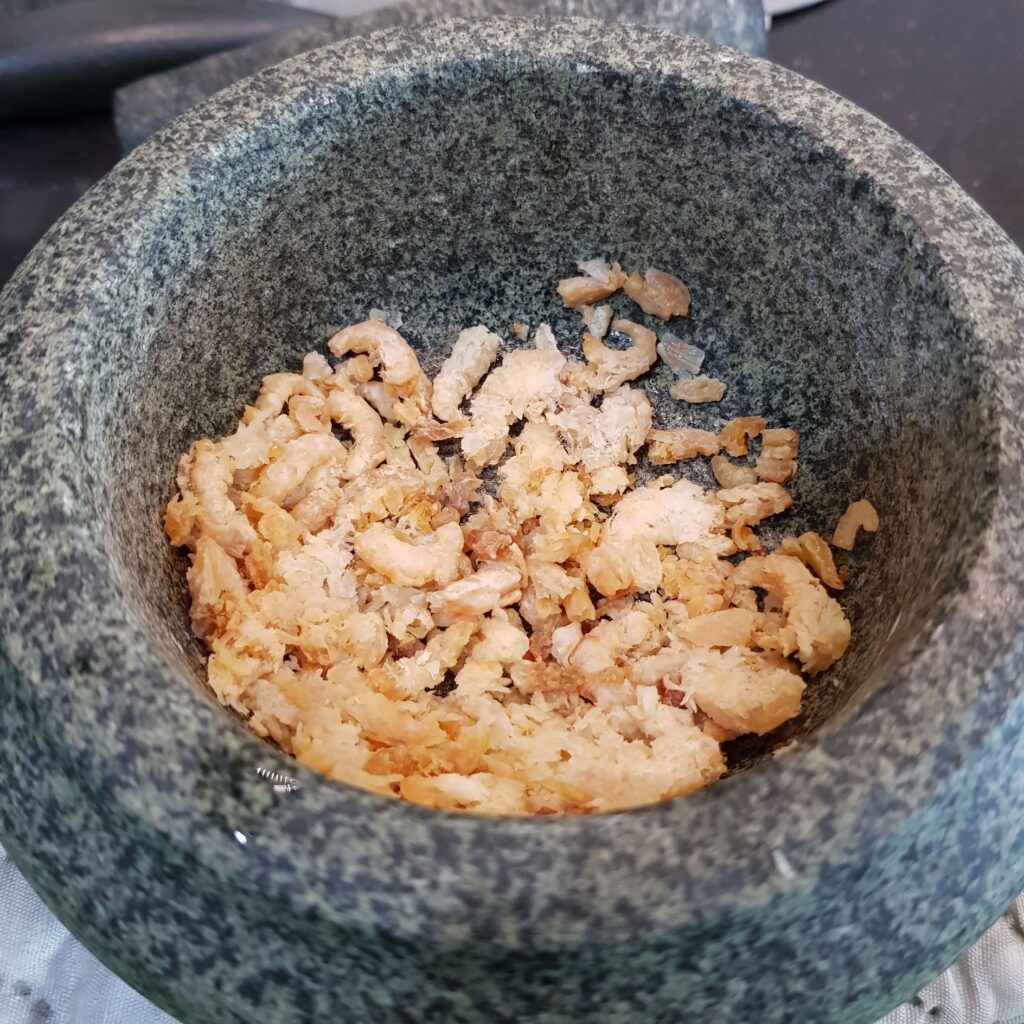
Next we need Dried Shrimp.
I love these so I tend to add a bit more. Wash and soak them for bit. You can blend it with the earlier ingredients, but I prefer to pound them with a pestle and mortar — you end up with chewier bits, which contrasts with the crispy stems and the soft leaves.
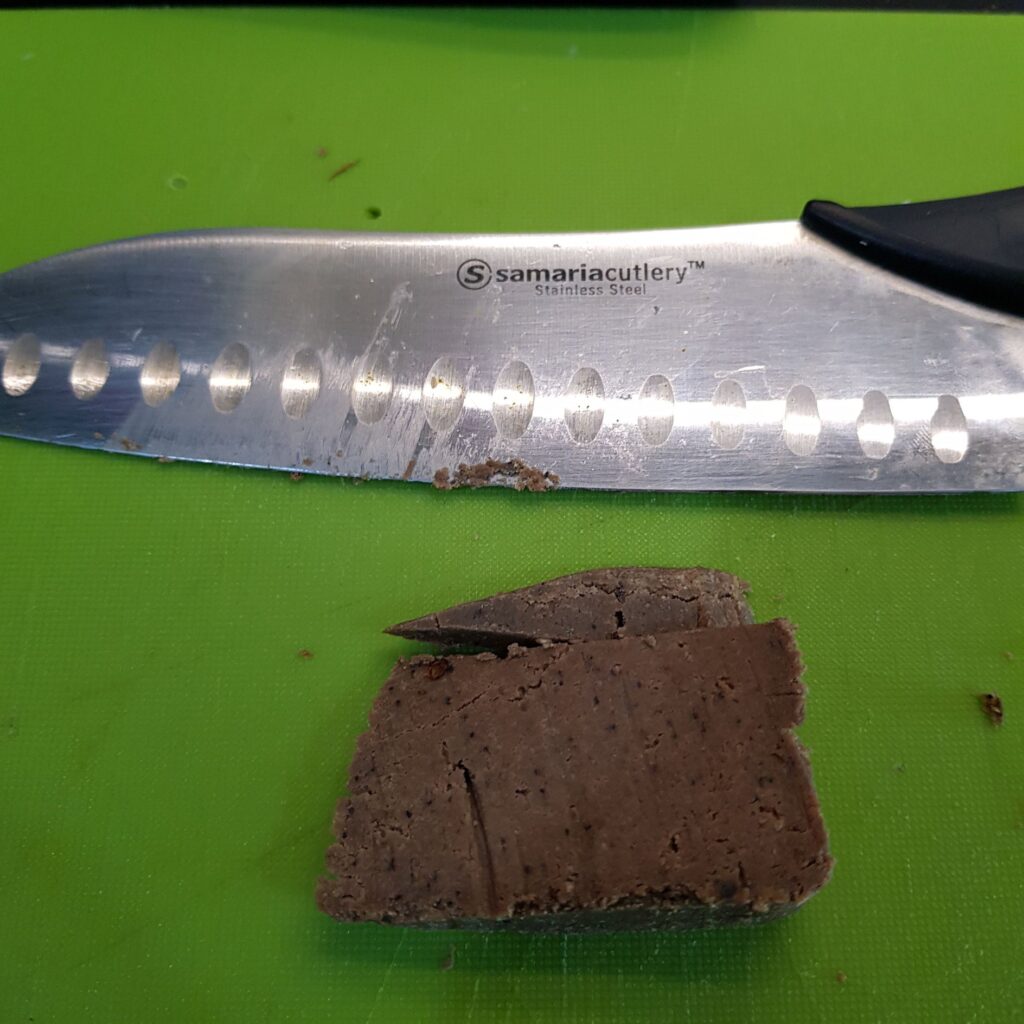
You also need belacan (shrimp paste). There are a few ways to source this.
- Belacan Bakar.
- Raw Belacan
Belacan Bakar, if you can get it, is ready roasted and ready to use and very convenient. It is less pungent in smell when cooking and has a richer taste.
If you buy Raw Belacan, ideally you should roast/toast it first. If you can, you want to do this outdoors in bulk as otherwise the pungent smell will linger on your curtains, carpets and sofa for days. You can also just fry it as is, but the taste will not be as rich.
It is also possible to get belacan in powdered form, but I don’t think that is suitable for this dish.
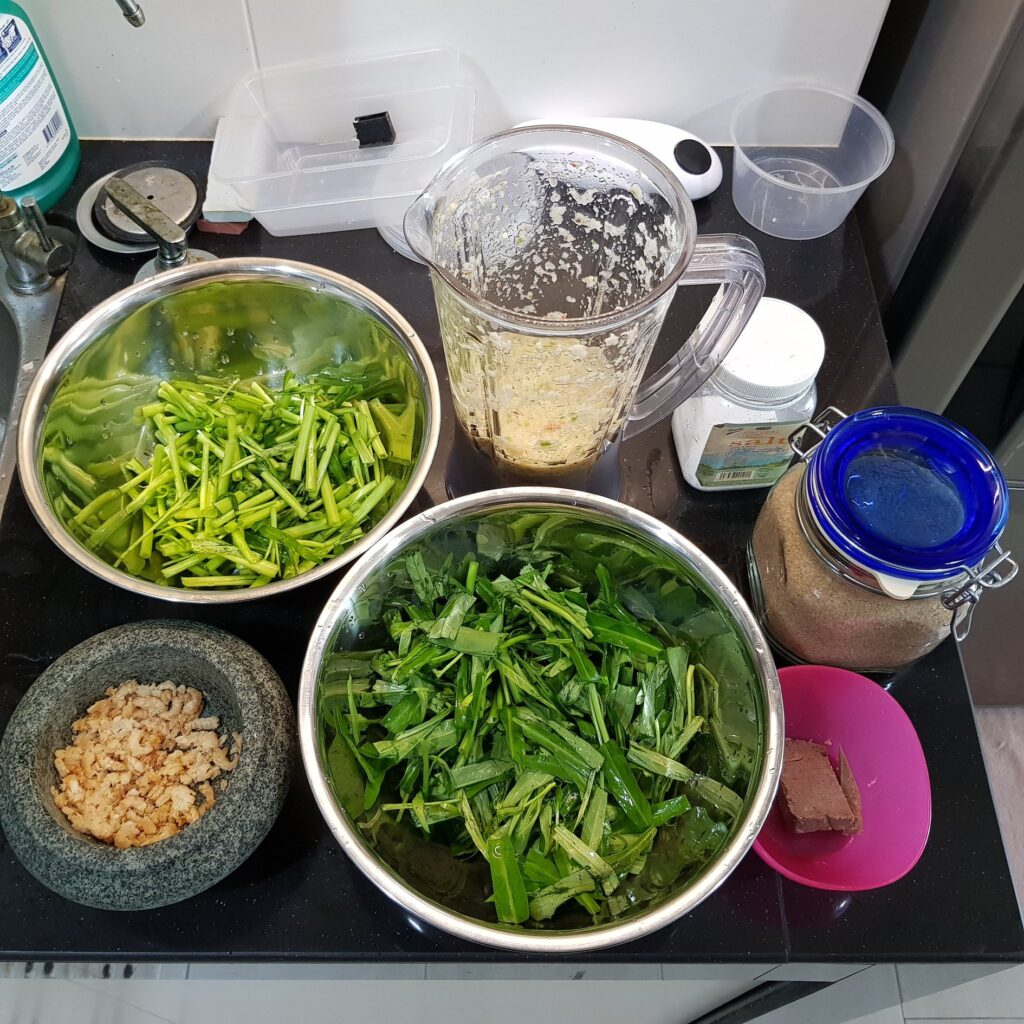
Get ready sugar and salt. I like to arrange everything near to me when cooking as otherwise I am quite likely to forget an ingredient or two.
Now we are ready to begin cooking.
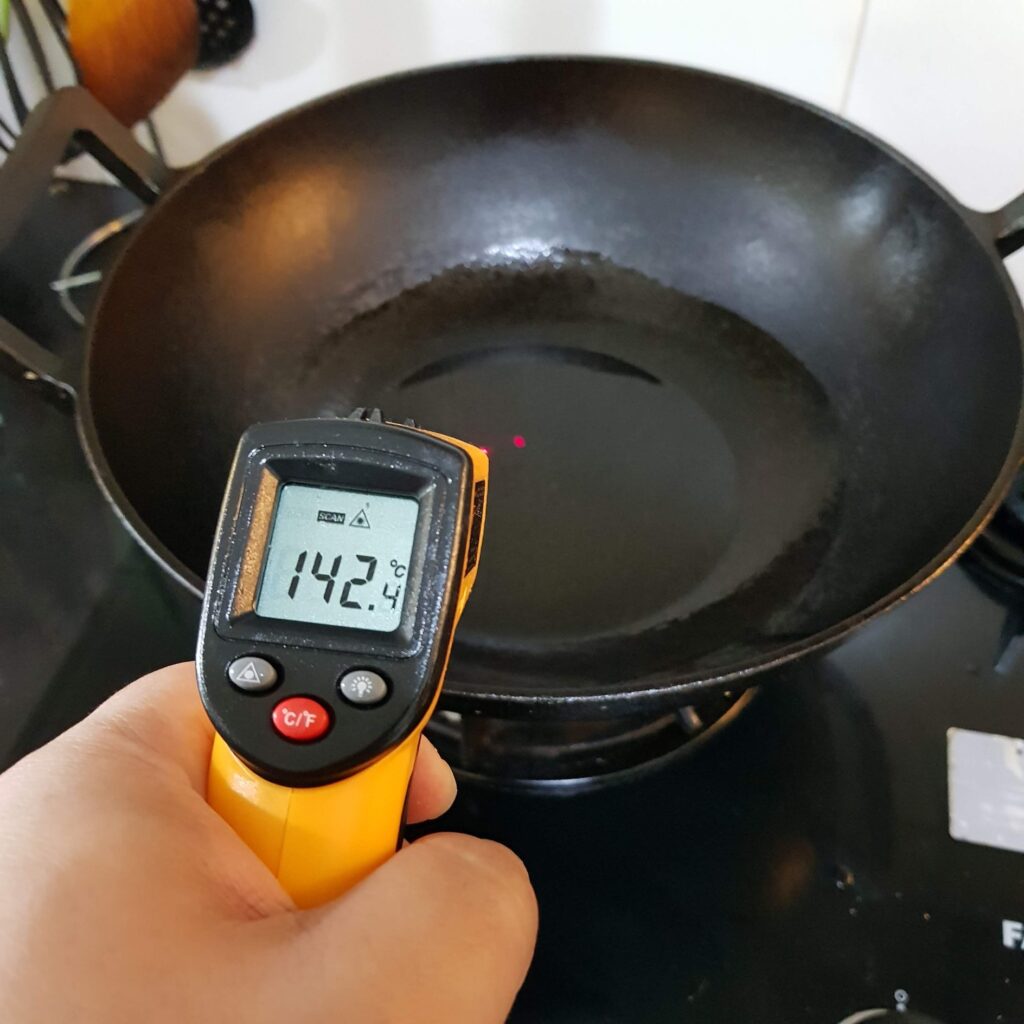
Heat up some oil in a wok.
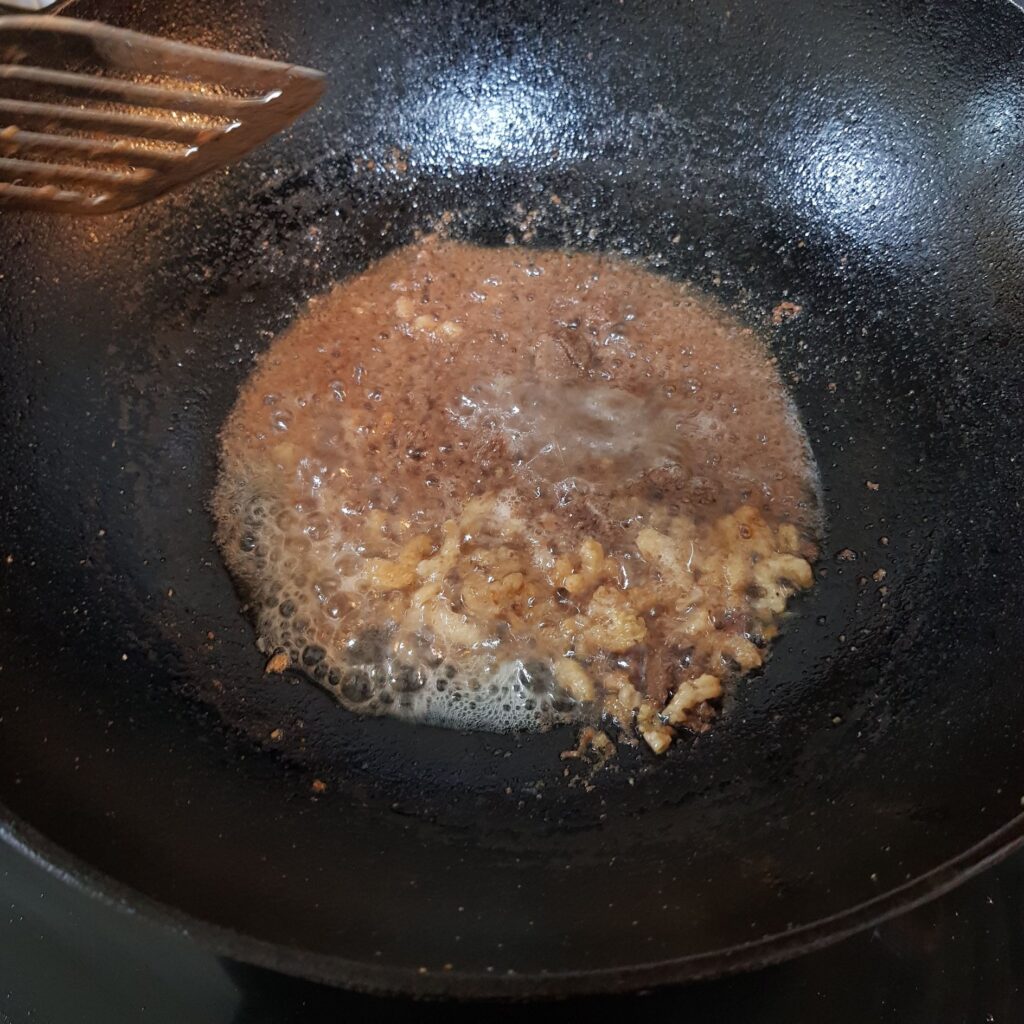
I start by adding in the belacan and as it begins to brown, I add in the dried shrip. Keep stirring vigorously so that it cooks but doesn’t get burnt.
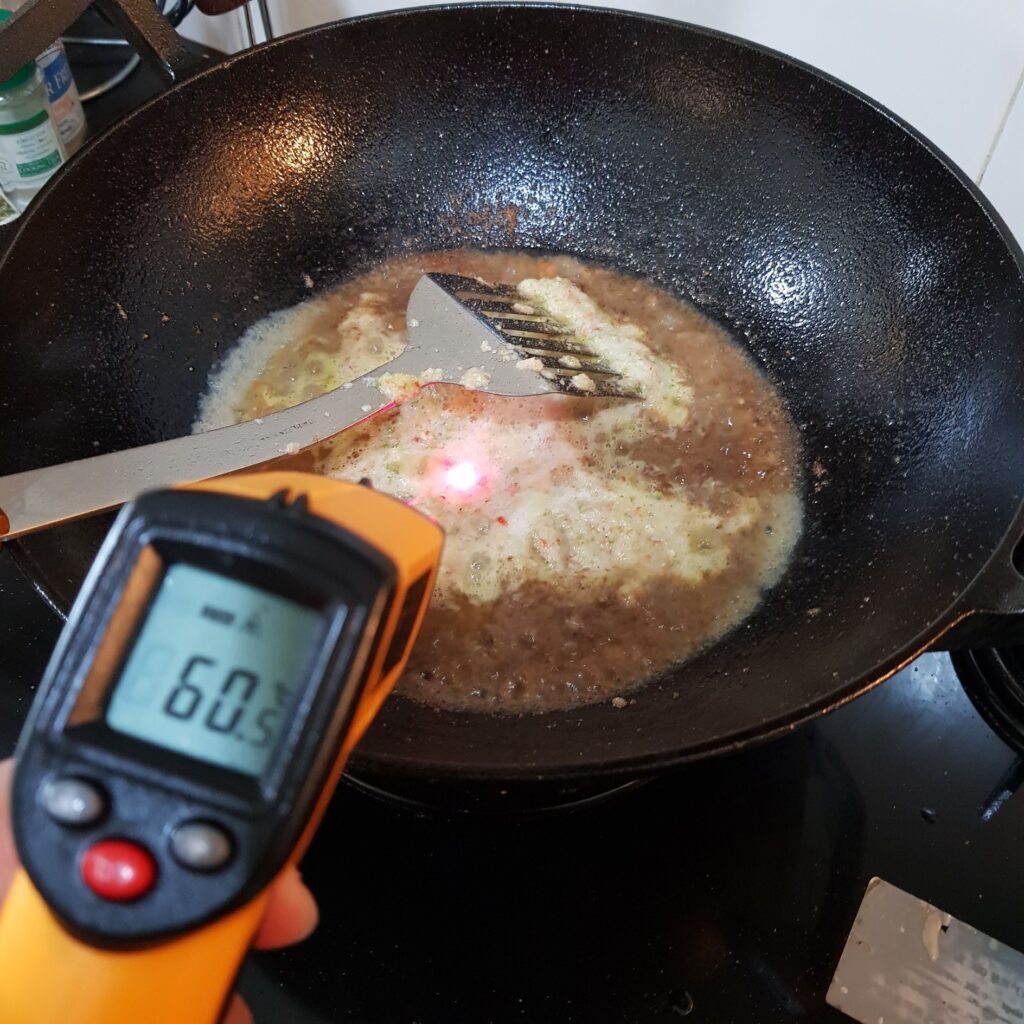
Next we add in the blended ingredients.
Because there was water in there, there temperature will drop significantly. This is why you want to minimize the water when blending.
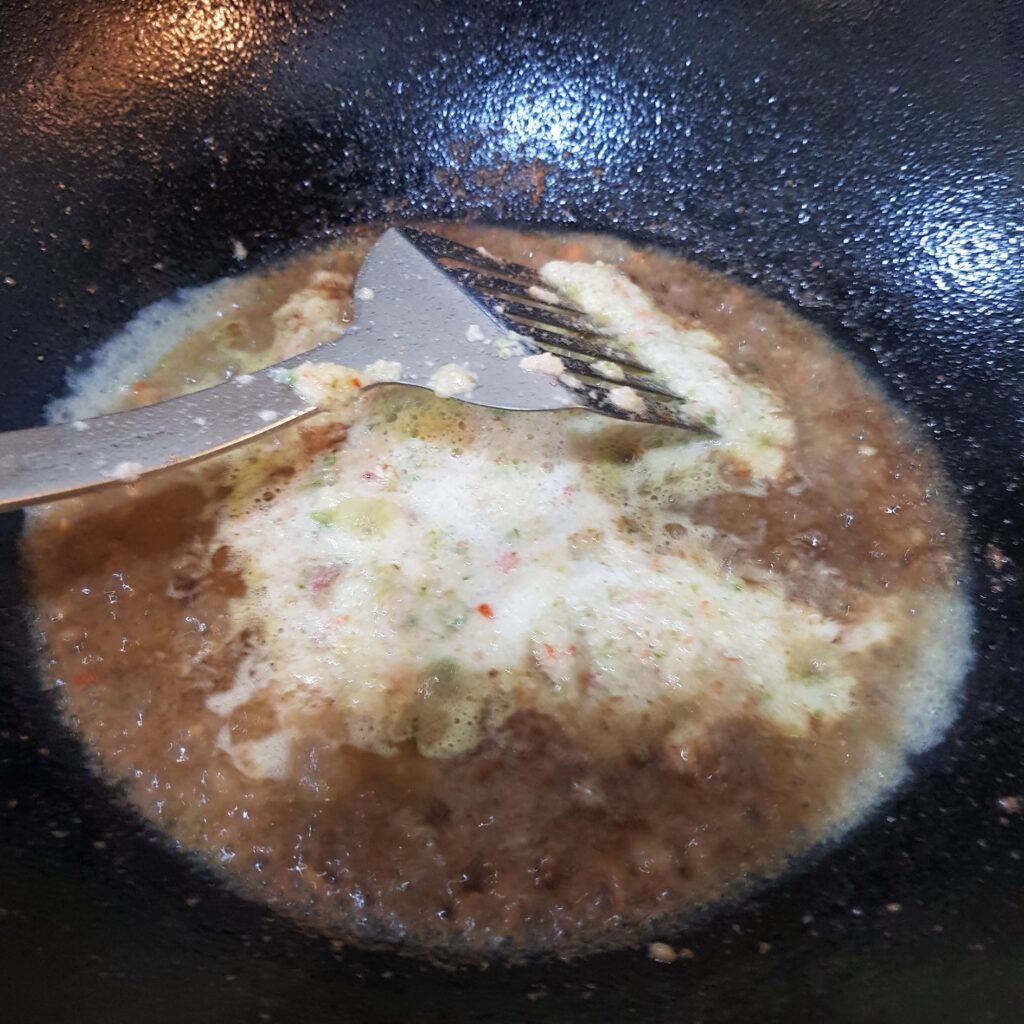
Keep stirring. As the wok heats up again, steam will start to rise as the water starts to evaporate.
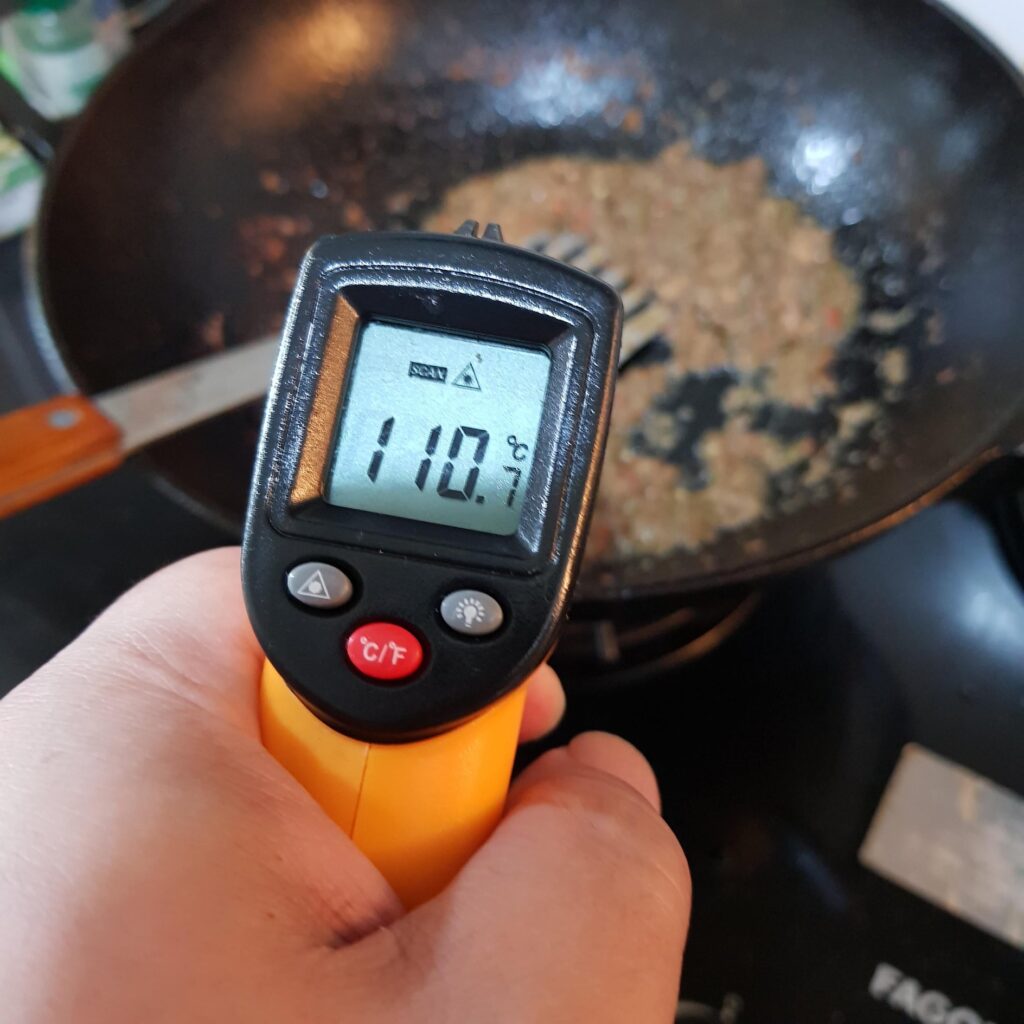
As long was there is still water content the temperature will remain below 100’C … as any energy going into the wok ends up converting the liquid water into steam rather than increasing the temperature of the wok.
Eventually though, the water will all have steamed away, and the temeprature will go abouve 100C. Now the blended ingredients will get fried and change colour. Keep stirring vigorously, flipping the contents over so it doesn’t get burnt.
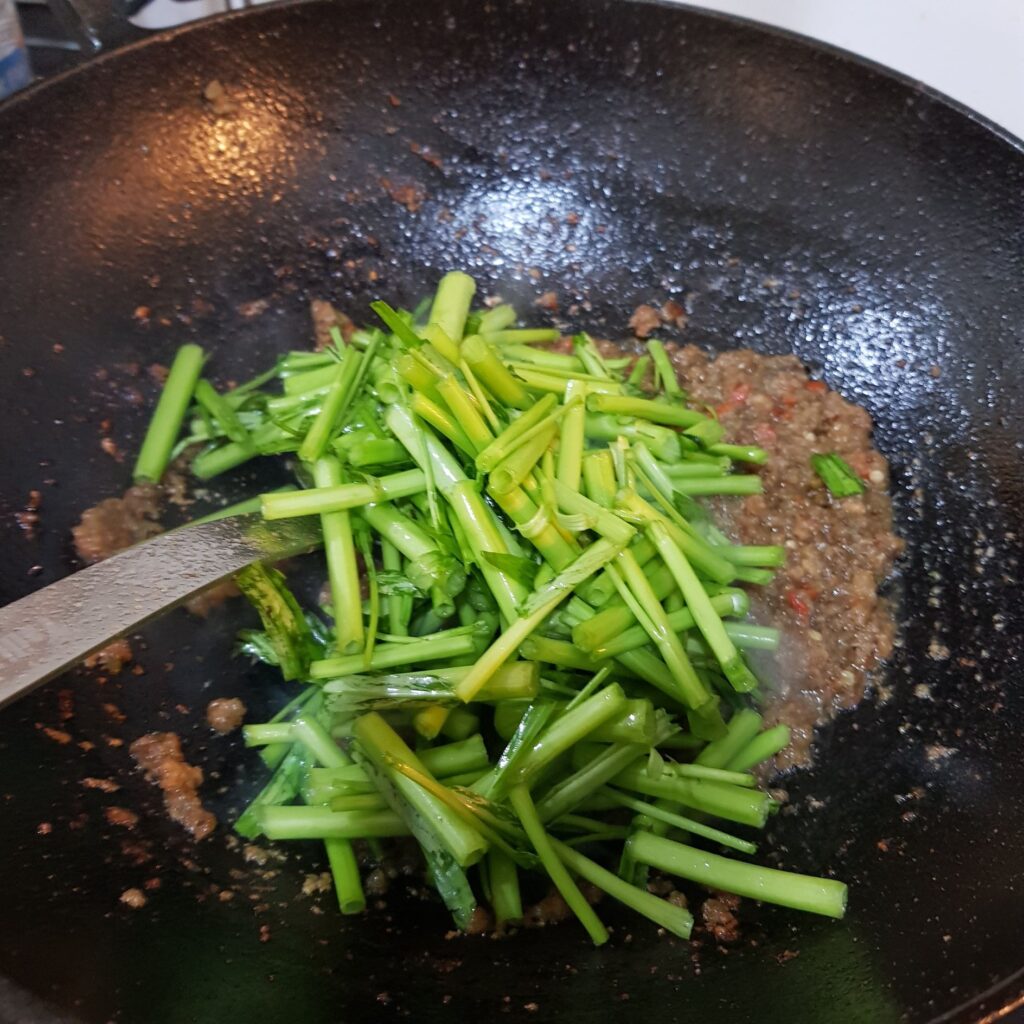
Once the oils separates from the fried blended ingredients, toss in the stems (not the leafs). The stems, being harder, take longer to cook.
Stir vigorously, so the blended ingredients and the stems mix well.
If the wok gets too dry, you can add a little bit of water at this point. The water will turn to steam, but the steam will help cook the stems.
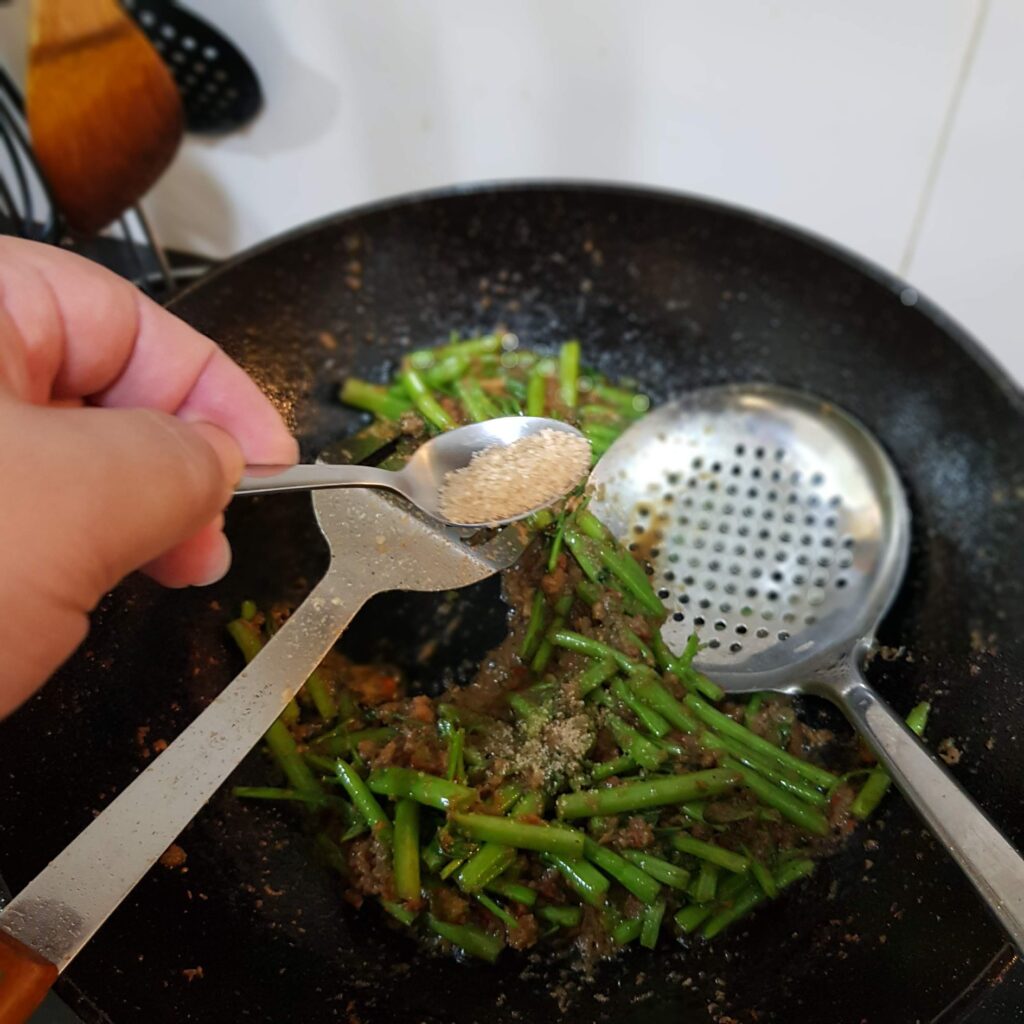
A little bit of sugar can be added at this point — it gives another dimension of flavour to the dish.
I find I do not need to add any salt to the dish … the dried shrimp and belacan provide enough of that.
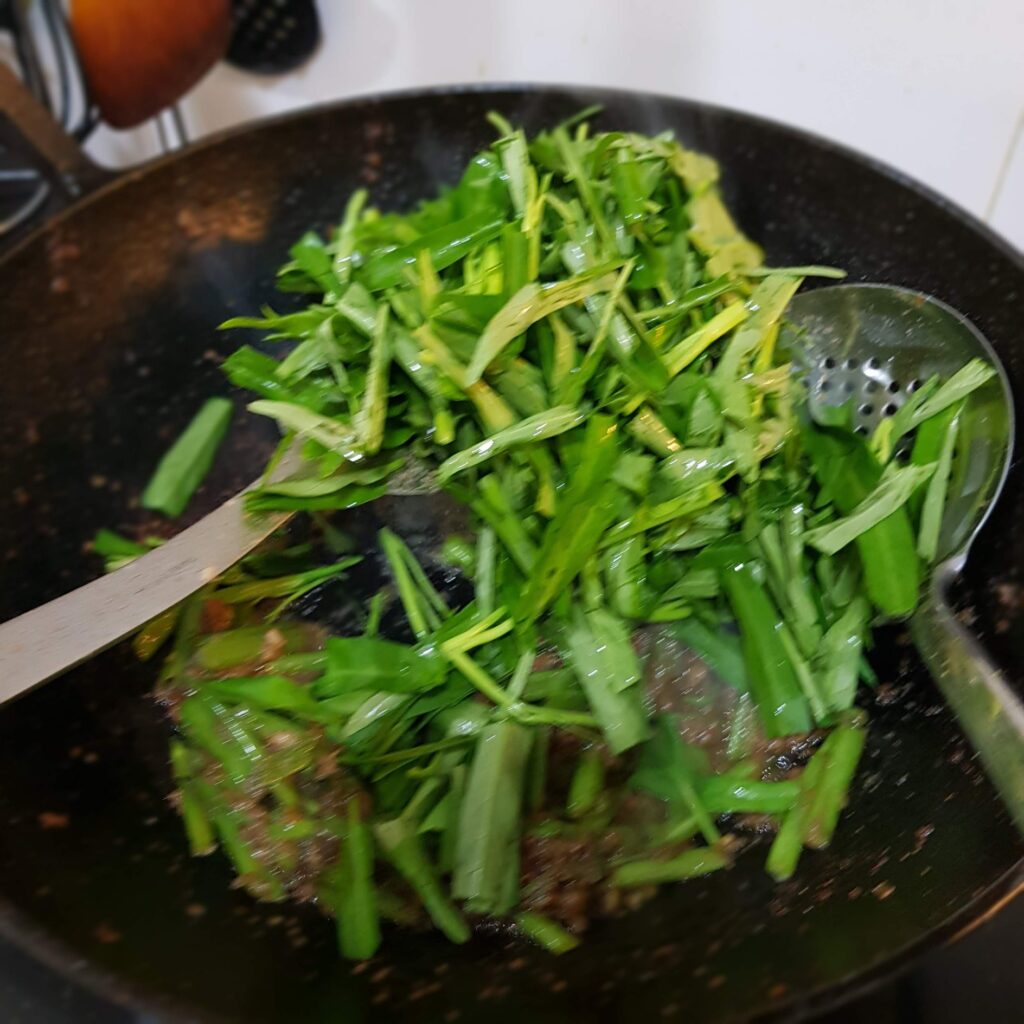
Once the stems are nearly at the softness you want, add in the leafs and stir a lot.
The leafs will shrink as they get cooked, so while it looks like a lot at first, you will end up with a lot less.
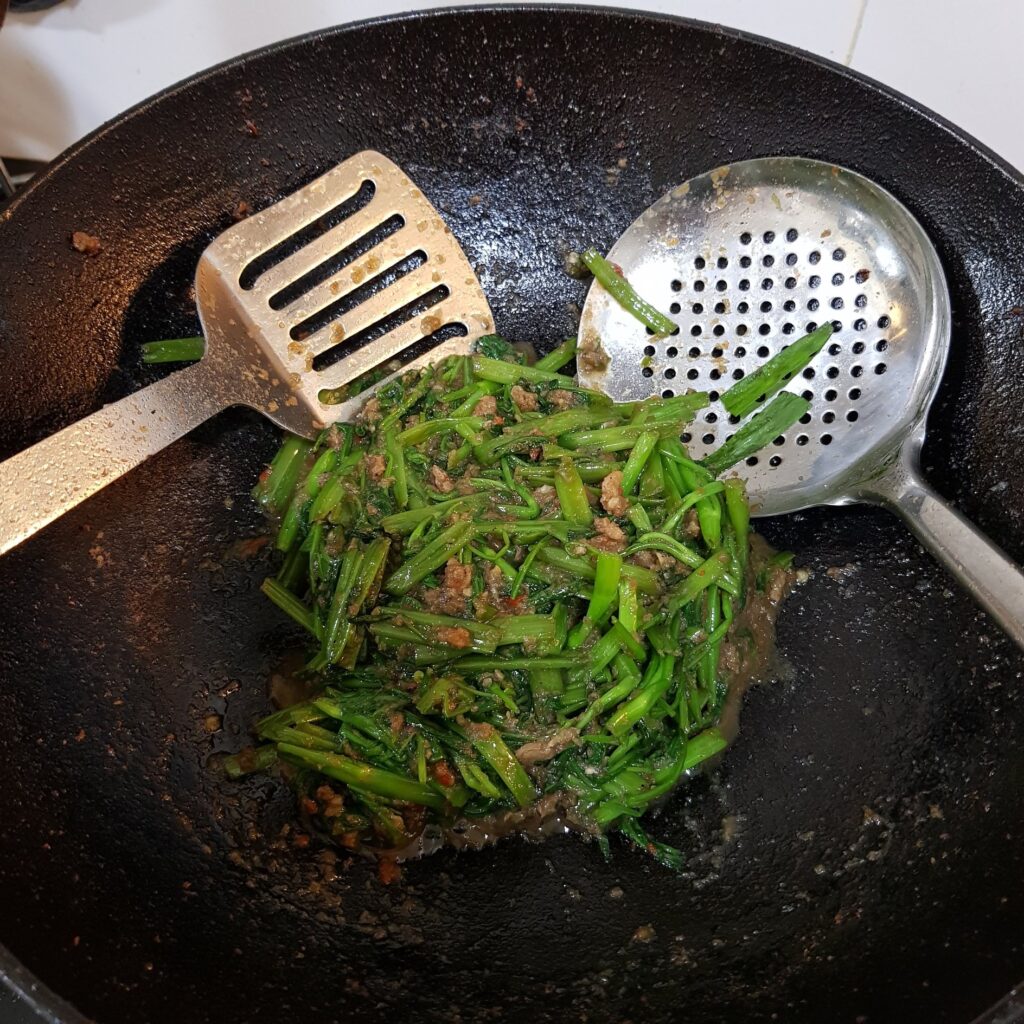
You will need to gauge yourself how long the stems and the leafs need to be cooked — depending on how crispy or soft you like it.
And that’s it!
Tip: Once it’s “ready” … take it out of the wok immediately — otherwise the heat from the wok will keep cooking it and your second serving will be overcooked.

